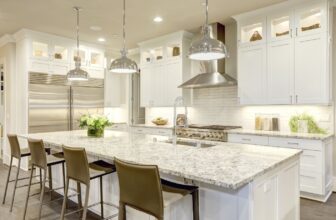
Fencing Your Small Spaces: Tips and Trends for Compact Landscaping

According to government statistics, around seven in eight of us have access to private garden space of some kind. While there are obvious systemic issues surrounding the statistics of those with no access to a garden, it is still remarkable that so many do have such a provision. But those with access to smaller spaces like balconies or minuscule courtyards might not be getting as much from their outdoors as those with larger spaces. However, with the right landscaping choices, even the most cramped of gardens can be made practical.
Multifunctional Fencing
Whatever the shape or makeup of your outdoor space, the way in which you fence its boundaries can have instrumental impacts on its utility and feel. As an example, a cramped balcony space might not be particularly conducive to the growing of plants and herbs; with the installation of some wooden fencing along the balcony rail or against the wall, though, vertical planter boxes and pockets can be installed easily. Fencing can also harbor shelving and brackets for hanging, allowing you to cultivate the ideal functional outdoor space.
Vertical Landscaping
This kind of functional design plays into a wider philosophy in landscaping for small spaces: vertical landscaping. Where square footage is scant, vertical space can be used to great effect in styling a space – as well as in rendering it useful and useable. Hanging herb gardens and vertical planter bags are excellent examples of utilizing fence verticality well, but there are other ways in which verticality can be used for the betterment of your outdoor space.
Ivy and other climbing plants can be woven into a fence-mounted trellis, adding color, depth, and texture to your space’s walls.

Alternatively, the fence itself could be painted or otherwise decorated to draw the eye up from the ground, bringing the totality of the space into focus.
Optical Illusions
The term ‘optical illusion’ might conjure to mind a cheesy installation rather than a transformative garden design principle, but subtle management of sightlines can yield powerful results. Mirrors are the key to these illusions; disguising mirrors in between hanging vines or against pots and planters can extend the horizon of the outdoor space, leading to the subliminal suggestion that there are more square feet to the space than there actually are. Similar effects can be achieved with bright, shiny, and glossy materials, where decorations have an ancillary purpose of adding depth.
Privacy
One final consideration with regard to landscaping a smaller space is that of privacy. Where small garden patios back onto one another or where balconies are eminently public to one another, fencing can be more than an aesthetic choice; it can be crucial for comfort and quiet enjoyment.

While wood panel fencing might be the first choice for privacy, it might not necessarily fit with other design choices or with the general style of your outdoor space. Wire and trellis fencing can be used well for privacy purposes if combined with dense climbing foliage or adorned with ornamental pieces.



















































































